Graphics Reference
In-Depth Information
spondsto colorfulness and luminance L to brightness, but in contrast to HSV colors,
chroma is an absolute measure that is valid for all hues, and luminance can be var-
ied independent of the other two dimensions. Qualitative color palettes can easily
be obtained by holding chroma and luminance constant, and using varying hues.
HCL colors with fixed luminance are always balanced towards the same gray and
thus do not have the problem of varying saturation like HSV colors (see Fig.
.
,
right). Similarly, diverging HCL color palettes can be derived (Zeileis et al.,
) by
interpolating again between a neutral color such as
(
H,
,
)
and two colors with
full chroma such as blue
. he resulting palette is
shown in the lower part of Fig.
.
. In contrast to the HSV counterpart, matching
colors (light red/blue and dark red/blue) are balanced to the same gray, and thus
receive the same perceptual “weight.” Note that chroma and luminance are varied
simultaneously, i.e., the full chroma colors are also darker than the neutral color.
Of course, it would also be possible to choose a darker neutral color (or lighter full
chroma colors); however, by varying both chroma and luminance better contrasts
can be achieved.
(
,
,
)
and red
(
,
,
)
Highlighting and Color-Based Shadings
12.3.2
he mosaicplots introduced in Sect.
.
are composed of empty tiles. It seems intu-
itive tousefilledtiles tohighlightinformation ofinterest.Consideragainthehospital
example: in Fig.
.
, we mark tiles for patients never or seldom visited in order to
visualize their proportions in the LOS strata. For optical clarity, we set the spacing
Figure
.
.
Spine plot with highlighting for the hospital data




















